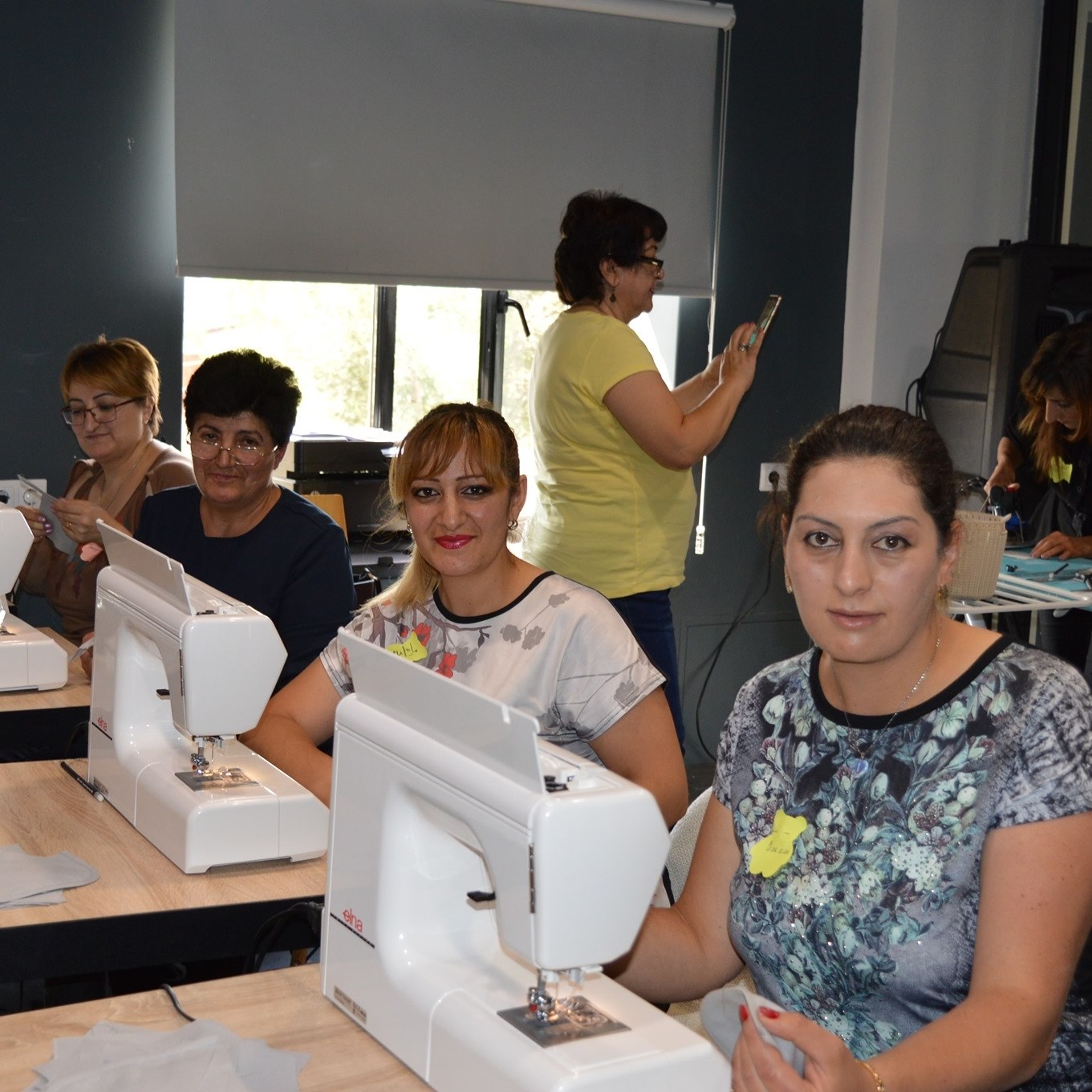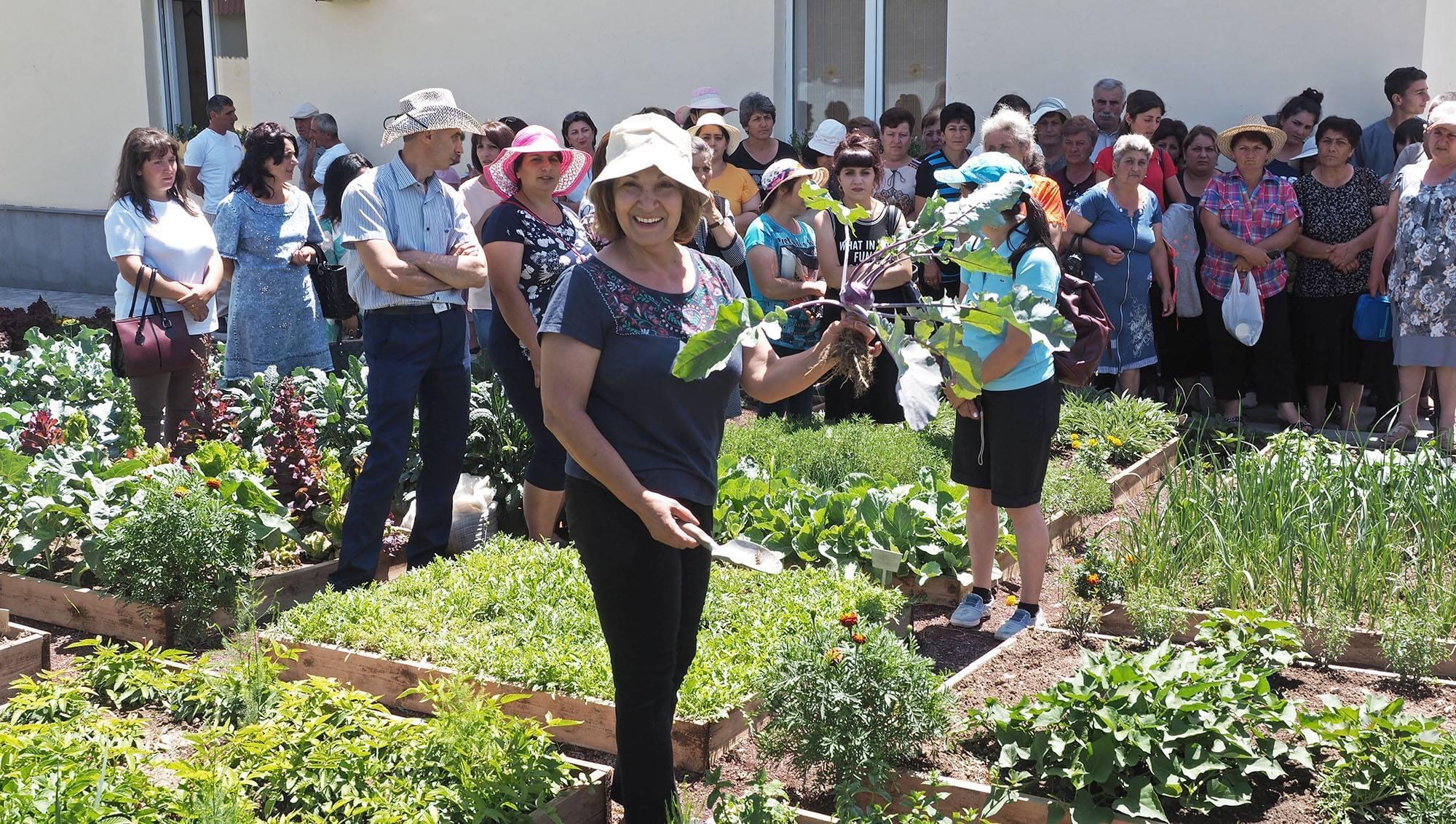Economic liberation through sustainable agriculture
“The primary aim of this initiative was to uplift the economic conditions of women in Shirak and Gegharkunik marzes. Throughout its implementation, the project provided beneficiaries with valuable inputs, knowledge, and hands-on experience in the realm of sustainable agriculture, which in turn affected the women’s empowerment in this rural area. This not only improved their economic prospects but also set a shining example for others in our communities, inspiring them to invest in and embrace sustainable agriculture practices,” says Nune Sarukhanyan from the Green Lane Agricultural Assistance Armenia, the coordinator of the project.
Paving the way for a green transition
One of the pivotal aspects of this project was the series of courses on Sustainable Agriculture attended by the beneficiaries. The courses equipped them with the latest agricultural technologies tailored to the challenges posed by global climate change.
As Sarukhanyan elaborates, “ The women received seeds and seedlings of crops resistant to climate change effects. They were also provided with essential equipment for greenhouse setup, water storage, drip irrigation systems, and more, all as investments in their sustainable farming endeavours.”
A significant turning point for the beneficiaries was their visits to the Green Training Center run by the Green Lane in Kotayk region, Armenia. Here, they were exposed to modern sustainable farming practices, spanning from multi-crop harvesting to composting and anti-hail nets. These visits transformed their perception of agriculture, illustrating that green agriculture isn’t just ecologically friendly, but can also be financially rewarding.
As a direct outcome of this initiative, the women formed a network and gained market power. To ensure they grasped the commercial aspects of green agriculture, the project also organised business planning, branding, and marketing courses. These courses enabled them not only to produce but also to sell their produce effectively. To solidify their knowledge in practice, the beneficiaries participated in festivals and exhibition sales, connecting with potential buyers and understanding their requirements.
To extend the benefits beyond the project’s target group, social media groups and pages were created. These platforms facilitate knowledge sharing, discussions on various agricultural issues, problem-solving, networking, and cooperation among community members.
Empowering families and communities
According to Sarukhanyan, the impact of the initiative reached far beyond economic empowerment. Women assumed more prominent roles in their families, and husbands began to support and engage in their wives’ activities. Children showed interest in sustainable agriculture from a young age, contributing to increased family income. Moreover, the initiative had a significant socio-economic impact on the beneficiary communities, fostering growth and development.
“In summary, this initiative is not just about empowering women economically; it’s about catalysing a green transition in local agriculture and nurturing resilient, thriving communities in the beautiful landscapes of Shirak and Gegharkunik, Armenia,” says Sarukhanyan.



